Part 27
New page, new update.
Update Number 26:
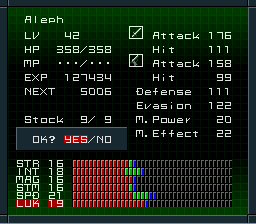

Luck it is.

A bigass door in a corridor next to where Belphegor was. Eh.

A Siren!
Wikipedia posted:
In Greek mythology the Sirens (Greek: Σειρήνες Seirenes or Ἀχελωίδες Acheloides) were sea deities who lived on an island called Sirenum scopuli. In some different traditions they are placed on Cape Pelorum, others in the island of Anthemusa, and still others in the Sirenusian islands near Paestum, or in Capreae (Strab. i. p. 22 ; Eustath. ad Horn. p. 1709 ; Serv. I.e.). All locations were described to be surrounded by cliffs and rocks. Seamen who sailed near were decoyed with the Sirens' enchanting music to shipwreck on the rocky coast.
The Sirens were considered the daughters of Achelous (by Terpsichore, Melpomene, Sterope, Chthon (in Euripides' Helen)) or Phorcys (Virgil. V. 846; Ovid XIV, 88). Homer says nothing of their number, but later writers mention both their names and number ; some state that they were two, Aglaopheme and Thelxiepeia (Eustath. ad Horn. p. 1709) ; and others, that there were three, Peisinoe, Aglaope, and Thelxiepeia (Tzetz. ad LycopL7l2) or Parthenope, Ligeia, and Leucosia (Eustath. /. c.; Strab. v. pp. 246, 252 ; Serv. ad Virg. Georg. iv. 562). Their number is variously reported as between two and five, and their individual names as Thelxiepeia/Thelxiope/Thelxinoe, Molpe, Aglaophonos/Aglaope, Pisinoe/Peisinoë, Parthenope, Ligeia, Leucosia, Raidne, and Teles. According to some versions, they were playmates of young Persephone and were given wings by Demeter to search for Persephone when she was abducted (Ovid V, 551). Their song is continually calling on Persephone. The term "siren song" refers to an appeal that is hard to resist but that, if heeded, will lead to a bad result. Later writers have stated that the Sirens were anthropophagous, but this is not supported by classical writings, nor is there any evidence that the Sirens drowned themselves failing to seduce one of the many heroes that passed their way, though that has also become a fixture in retellings of the story.

This siren is being all emo, though.
So, since this Siren is singing the song of the Watchtower, it is Aleph's duty to stop her.

Map.
Back to Holytown! The bar will surely hold new information.
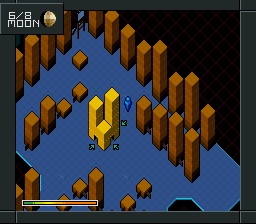







Suuure. In any case, the Center is not a good place.




Well, I hope that you are not all talk, like that Temple Knight that was all the time in the bar.





Ooooh, so those are the illusions that Belphegor mentioned. No biggie, since Aleph's stats kick ass.



*grumblegrumble*















Awww. Something has to be done about it. But HOW?


Hms. Another guy wants to go to the Abyss, eh?

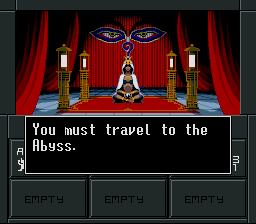
Thank you for repeating what I already know.

Time to fuse some minions.
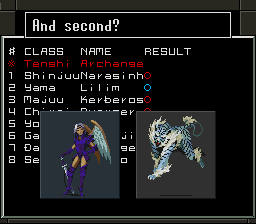
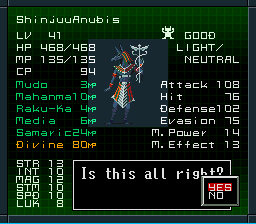
Anubis!
Time to fuse me a furfag deity.
Wikipedia posted:
Anubis is the Greek name for the ancient jackal-headed god of the dead in Egyptian mythology whose hieroglyphic version is more accurately spelled Anpu (also Anupu, Anbu, Wip, Ienpw, Inepu, Yinepu, Inpu, or Inpw). He is also known as Sekhem Em Pet. Prayers to Anubis have been found carved on the most ancient tombs in Egypt; indeed, the Unas text (line 70) associates him with the Eye of Horus. He serves as both a guide of the recently departed and a guardian of the dead.
No public procession in Egypt would be conducted without an Anubis to march at the head, the "go-between" of gods and men. The ancient Egyptians swore "by the Dog" when making oaths they would not break. Anubis was said to have servantes called Anubite.
Anubis was the guardian of the dead, who greeted the souls in the Underworld and protected them on their journey. It was he who deemed the deceased worthy of becoming a star. Ancient Egyptian texts say that Anubis silently walked through the shadows of life and death and lurked in dark places. He was watchful by day as well as by night. He also weighed the heart of the dead against the feather symbol of Ma'at, the goddess of truth. One of the reasons that the ancient Egyptians took such care to preserve their dead with sweet-smelling herbs was that it was believed Anubis would check each person with his keen canine nose. Only if they smelled pure would he allow them to enter the Kingdom of the Dead.
Anubis was portrayed as a jackal-headed man, or as a jackal wearing ribbons and holding a flagellum, a symbol of protection, in the crook of its arm. Some think that he was not pictured as a jackal but as a dog, fox, wolf, or hybrid instead. Very rarely is he ever shown fully human. Anubis was always shown as a black jackal or dog, even though real jackals are typically tan or a light brown. To the Egyptians black was the color of regeneration, death, and the night. It was also the color that the body turned during mummification.
The reason for Anubis' animal being canine is based on what the ancient Egyptians themselves observed of the creature - dogs and jackals often haunted the edges of the desert, especially near the cemeteries where the dead were buried. In fact, it is thought that the Egyptians began the practice of making elaborate graves and tombs to protect the dead from desecration by jackals. A statue of Anubis, jackal-form, was found in Tutankhamen's tomb. When pet dogs died, they were mummified and buried in temples dedicated to Anubis.
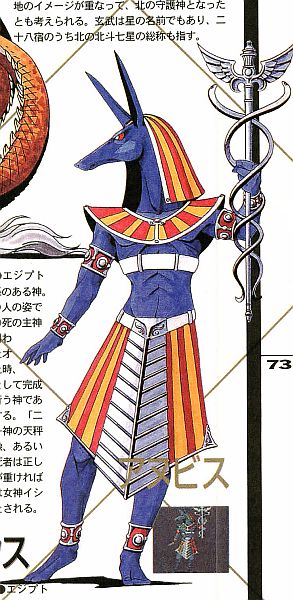
3 way fusion time!
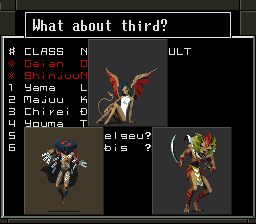
Ganesha!
Wikipedia posted:
Ganesha (Sanskrit: गणेश; Gaṇeśa; listen (help·info), also spelled Ganesa or Ganesh) is one of the best-known and most worshipped deities in Hinduism[8]. Although he is known by many other attributes, Ganesha's elephant head makes him easy to identify.[9] Several texts relate mythological anecdotes associated with his birth and exploits, and explain his distinct iconography. Ganesha is worshipped as the lord of beginnings and as the lord of obstacles (Vighnesha),[10] patron of arts and sciences, and the god of intellect and wisdom.[11] He is honoured with affection at the start of any ritual or ceremony and invoked as the "Patron of Letters" at the beginning of any writing.[12]
Ganesha appears as a distinct deity in clearly-recognizable form beginning in the fourth to fifth centuries, during the Gupta Period. His popularity rose quickly, and he was formally included as one of the five primary deities of Smartism (a Hindu denomination) in the ninth century. During this period, a sect of devotees (called Ganapatya; Sanskrit: गाणपत्य; gāṇapatya) who identify Ganesha as the supreme deity was formed.[13] The principal scriptures dedicated to his worship are the Ganesha Purana, the Mudgala Purana, and the Ganapati Atharvashirsa.
Ganesha is one of the most-worshipped divinities in India.[14][15] Worship of Ganesha is considered complementary with the worship of other forms of the divine, and various Hindu sects worship him regardless of other affiliations.[16][17][18] Devotion to Ganesha is widely diffused and extends to Jains, Buddhists, and beyond India.
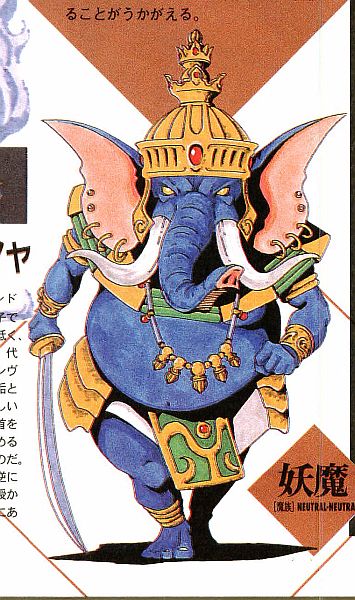
Holy shit those are VERY nice amounts of HP and MP.
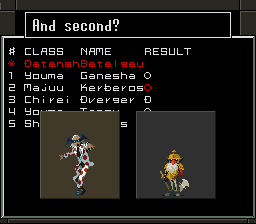
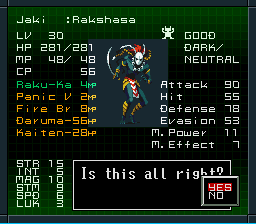
Already described earlier.
And mixing those 3...
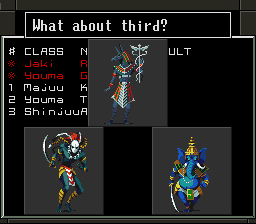
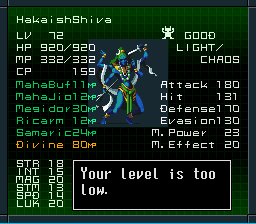
Yes, that means that the Final Fantasy summon is a tranny.Wikipedia posted:
Shiva (also spelled Siva; Sanskrit Śiva) is one of the principal deities of Hinduism. Within Shaivism he is viewed as the supreme deity, whereas in other branches of Hinduism such as the Smarta tradition he is worshipped as one of several manifestations of the divine. Followers of Hinduism who focus their worship upon Shiva are called Shaivites or Shaivas (Sanskrit Śaiva)[2]. Shaivism, along with Vaiṣṇava traditions that focus on Vishnu, and Śākta traditions that focus on the Goddess (Devī
are three of the most influential denominations in Hinduism[3].
Shiva is one of the five primary forms of the Divine in Smartism, a denomination of Hinduism that puts particular emphasis on five deities, the other four being Vishnu, Devi, Ganesha, and Surya.[4] Another way of thinking about the divinities in Hinduism identifies Brahma, Vishnu, and Shiva as each representing one of the three primary aspects of the Divine in Hinduism, known collectively as the Trimurti. In the Trimurti system, Brahma is the creator, Vishnu is the maintainer or preserver, and Shiva is the destroyer or transformer.
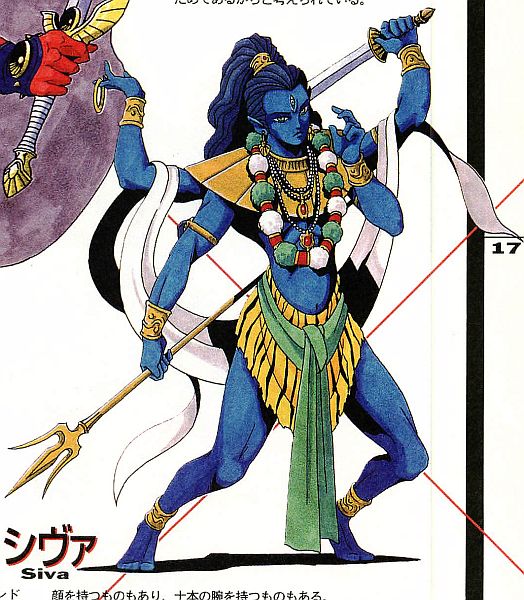
Okay, done with that. Time to go to the Great Church once more.



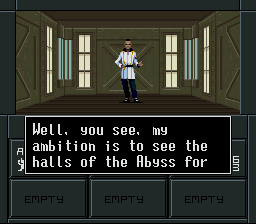




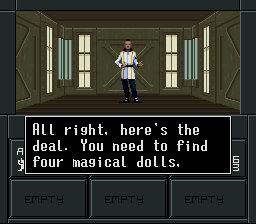
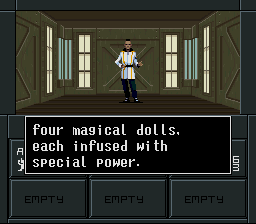

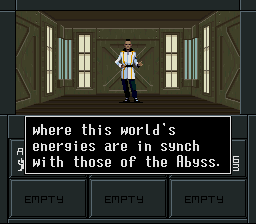
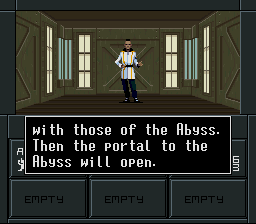
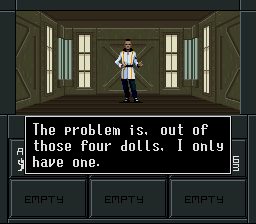





Hooray! The last doll was acquired!

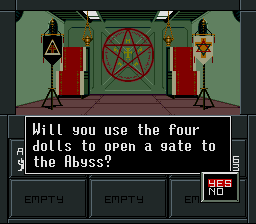









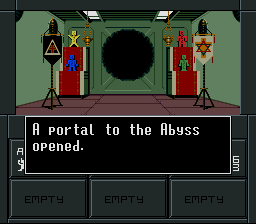
SUCCESS!
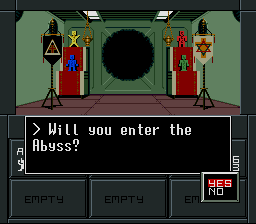
obviously.

The Abyss!
It is kind of hard to see in it.
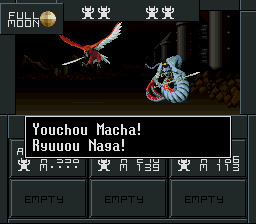
Two new demons!
Wikipedia posted:
Macha (/ˈmaxə/) is a goddess in Irish mythology linked with horses, battle, and sovereignty. She is said to have collected the heads of the slain, which were known as "Macha's acorn crop". Though possibly a triple goddess herself, she is often seen as one aspect of the Irish triple goddess of battle and sovereignty, the Morrígan.
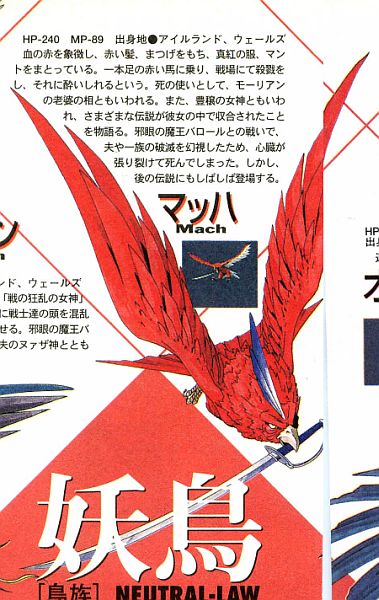

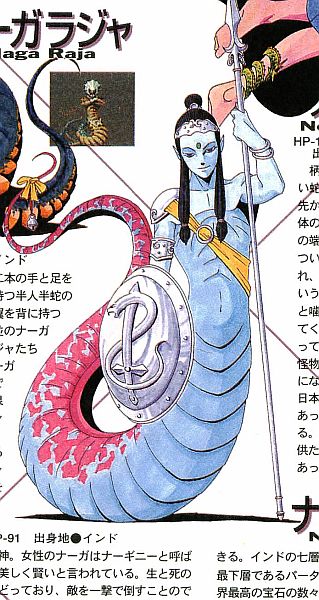
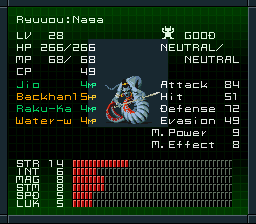
The Naga has a ribbon on its tail. Awww.
Wandering around, one can find this guy (seriously, the people tiles in the Abyss are HARD TO SEE)



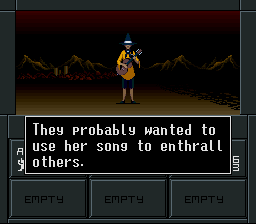
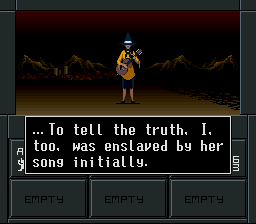


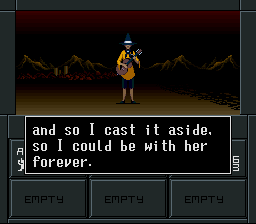
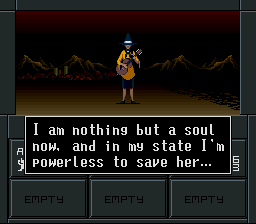

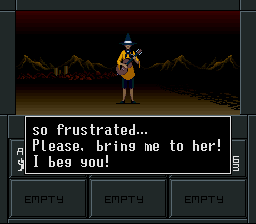
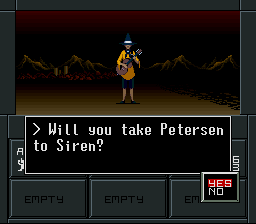
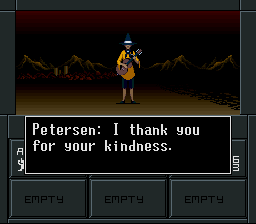
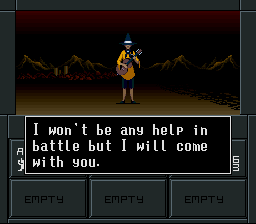
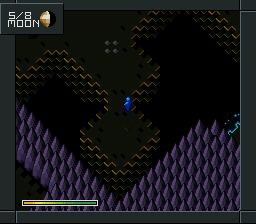
See? It is not easy to spot.
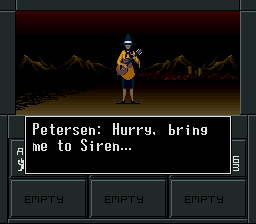
Okay okay.
Paassing through the portal once more, and a toraport, and then GOING UP THE DAMN TOWER once more later...




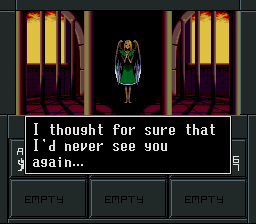
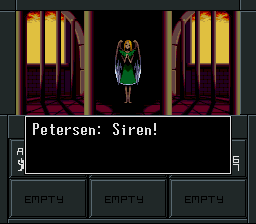
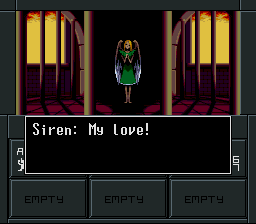
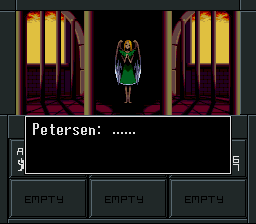
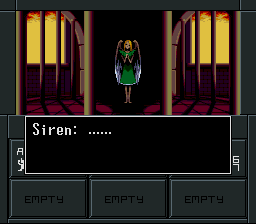
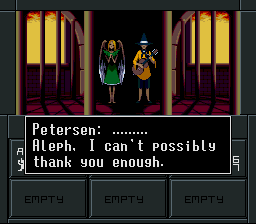
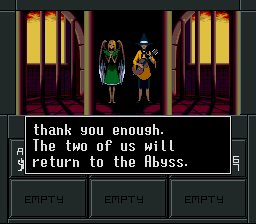

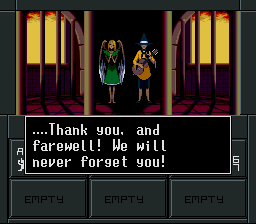

And then they are gone back to the Abyss, being happy.
Time to check how the proletariat feels once the song is over (and the Factory gets a regular overworld song, I kind of liked the Siren's song a bit more).











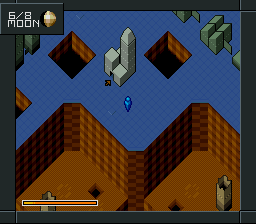









Quite a change, eh?
Time to watch the NEWS.








Holy shit.
Next time: Back to the Abyss, and the biggest HOLY SHIT moment so far.